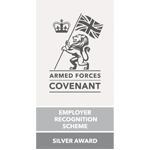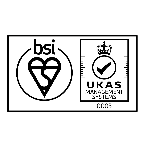
Lifting end user burden of responsibility
When the lifting equipment industry adopts LEEA training as best practice, operators in the offshore sector can be reassured over crane safety, says Justin Boehm, LEEA’s Regional General Manager for Australia.
Australia’s offshore energy regulator has invited LEEA to participate in a round table to discuss ways to improve Offshore Crane Safety. Within Australian Commonwealth waters there are 67 offshore pedestal cranes in operation on 35 permanently installed production facilities. This is in addition to several other types of cranes and hoists, as well as a fluctuating number of mobile drilling and vessel facilities fitted with large cranes.
A concerning aspect of crane safety is that there have been 29 crane-related notifications of dangerous occurrences (not including notifications in relation to dropped objects) between 1 July 2020 and 20 May 2021 – a significant increase on previous years. A study paper reports that many of these incidents were common across duty holders, which suggests that crane safety is not being appropriately managed across the offshore oil and gas industry. It goes on to explain that the dangerous occurrences related to pedestal cranes trends appears to fall within three broad categories: inspection and management of corrective maintenance; competency of personnel; and failure to apply lessons learned. According to the paper, Duty holders’ processes do not adequately describe the required competency of the crane inspector and crane maintainer and how duty holders verify the competency of inspectors and maintainers. In addition, there appears to be limited utilisation of established industry association practices to train, qualify and validate crane inspectors and maintainers – citing LEEA training as an example.
Competency is an important topic here at LEEA. We believe the essential ingredients for competency are practical knowledge and experience combined with technical know-how. It is about a person understanding what they have to do to perform a task, receiving the proper training to ensure they perform it correctly and to understand the limitations of, and safe practices for, the task.
Companies will often determine their own baseline elements of competency for personnel performing the tasks they require. This can mean that a company need only ‘deem a person competent’, without offering any real validation – which has obvious risk potential where a task involves health and safety issues. Competency is critical in these cases and a lack of it has serious consequences, as the paper explains.
Many organisations are using ISO 17020 for assessment of competence. Numerous elements of this standard have been factored into the LEEA Core Competency Benchmark framework over the years. Training, on-job assessment and Continuing Professional Development are important elements of competence that are vital to ensure that our members’ lifting equipment inspectors remain current in their knowledge and competent do perform the safety critical tasks expected of them.
It makes sense to make it easier for the offshore sector – and indeed any end user sector – to find competency in the lifting industry and I am pleased to inform operators that LEEA membership cuts through any ambiguity by offering the definition of competency. The LEEA badge will assure end users that we support our members in reaching a high standard of competence, making them well placed to support end users in their competency. With the adoption of LEEA training as best practice, operators in the offshore sector can be reassured over crane safety.
Offshore operators will be interested to know that LEEA has created a new course to educate Company Directors, Senior Managers and responsible persons where lifting equipment is used. The Lifting Equipment End User Guidance course provides an essential insight to general legal responsibilities for lifting equipment for end user duty holders. These can be anybody from the owner of equipment, supervisor, user, or indeed any officer of a company. Course content includes an introduction to the legislative requirements, principles for selection of equipment and the role of the competent person conducting thorough examinations of lifting equipment.
For further information email: events@leeaint.com



